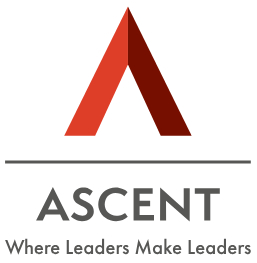Blog
Paving way for the NextGen in the Family Business
Of all the people in the world, why is your child the most suitable person to lead your business in the future? It’s a question few entrepreneurs get asked. And yet, founders often unquestioningly bank on their next generation to carry on the legacy of their organization. It’s an exciting journey, and one fraught with challenges. Only a fruitful coexistence between the Founder and the NextGen in the medium term can lead to a successful transition in the long term. This requires the Founder to create a channel of constant communication, identify and believe in the skill and will of the NextGen, accept change and promote continual learning through the Organization.
The process of a Founder selling his company to the NextGen leader must begin well before the NextGen considers joining the business. Often, the NextGen does not completely understand what entrepreneurship entails, how the platform laid out by the Founder could meet his/her aspirations, and how exciting the journey could be. I grew up being privy to and participating in several dinner table conversations about our family-owned business. These were pivotal in shaping my thinking, allaying my fears and getting me genuinely interested in joining it, at age 24.
“What’s in it for the NextGen?” is a question worth pondering and articulating by the Founder, like an Employee Value Proposition is. What excites my daughter, how can she add value and what does my organization have to offer her? Is it the product, the purpose, the platform or the idea of family wealth that truly excites her? Will she add value in terms of her intelligence, her discipline, her technical acumen, or her marketing knack? Is this scalable business, a NextGen friendly one, one that can sustain in the future? Identifying these motivations can help design a role that hits the skill-will-role bullseye – in which an individual has both the will and the skill for a certain role.
At the time of the NextGen’s joining, the Founder must communicate adequately with the rest of the Organization. Why is she entering the business? What’s she accountable for? How does the Founder’s role change? Will things in the organization change? People may have questions and concerns, and while bringing in the NextGen may not be a democratic hire, being on the same page as the organization can only ease the process.
After joining, there must be a consistent forum for communication about non-operational issues between the Founder and the NextGen. Topics may include vision and purpose, motivation, business ideas, expectation sharing, coaching, and feedback. Amidst the daily operational conversations, it’s easy to believe that these aren’t needed and assume that the parties are aligned. However, it’s better to err on the side of over-communication than under. We recently realized that this activity was better done weekly or fortnightly than monthly or quarterly, and there’s a much stronger feeling that we’re rowing in the same direction ever since!
Both the Founder and the NextGen must be aware that they and the dynamic between them are constantly under the scanner by their people. Not holding the NextGen accountable for tasks and results is as harmful as dismissing the NextGen’s opinion in a meeting. In a meeting recently, I expressed words of disagreement with my father about a critical decision that our six-member Strategy Council, of which I’m part, had agreed on a few months earlier. While I thought it was in the spirit of transparency and healthy debate, I found out later that the team was left rankled and dispirited by it for several days after. The smallest interactions, even four years after joining the Organization, are still being watched!
“Son, you must fanatically strive to earn their stripes in the minds and hearts of people. And this will only happen through what you deliver, and how you make people feel.”
These were the only words of advice my father gave me before I joined, and they were valuable. A huge amount of credibility can be built in the first year, and if the NextGen isn’t deemed credible by the rest of the Organization, it can take years to overcome later.
A founder is deeply passionate about his business’ offering, about the problem it is solving and about how his business is about going about doing it. The people he’s hired so far largely align with his ideology. Disagreement may be rare, outliers may have been weeded out. The founder’s beliefs and behaviors directly translate to the Organization’s culture. The NextGen leader may be one of the first inductees that may not completely align with the Why, How and What of the organization, and is still here to stay. A commitment to organizational and personal change is critical.
The NextGen may have ideas on the business model, on culture, on people practices, on technology adoption, on systems and processes that challenge the status quo. As long as these are well founded in research, expertise and applicable to the context, the Founder, and the NextGen must work together on aligning these areas, and on implementing organizational changes.
One of the elements of personal change could be a transition the Founder must make from being a heroic leader to a post-heroic leader. Many entrepreneurs are by nature, heroic. They like being in the forefront, being hands-on, answering questions, taking decisions and being charismatic. It’s what has helped an organization reach a particular scale. For an organization to scale beyond this point, however, decision making capability must scale beyond the Founder. The NextGen’s entry can provide an occasion to let go of some of the decision makings, to encourage collaboration, and to build capability in people.
My father and I read around 20 books a year each, and it helps us build deeper understanding, bring in new ideas and keep our organization relevant and poised for the next stage of its growth. Peer-to-peer platforms like the Ascent Foundation, of which I’ve been a member for the past three years have provided tremendous learning, ideas and external perspective. My Ascent Trust Group is a friendly group, a sounding board and a source of constant inspiration. The Stanford Seed Transformation Program, which I completed recently helped bring in the leading business frameworks and practices into our entire Senior Team and gave me access to some of the brightest entrepreneurs in the country. This continual learning makes us all feel equipped for the next stage of our scaling up.
Whether or not the NextGen is the most suitable person to lead the Organization in the future, her introduction must serve the purpose of building a bigger, stronger, more sustainable organization. If you’re looking to build an organization that outlasts you in the future, it should be able to live without you in the present. Keeping open the channel of constant communication, achieving a skill-will-role bullseye for the NextGen, accepting change and promoting continual learning can all contribute towards achieving organizational scale, growing the family wealth and building a legacy, fulfilling what are aspirations of most Founders I know!
-Akshay Purohit, Director, Neptunus Power Plant Services Pvt. Ltd.



